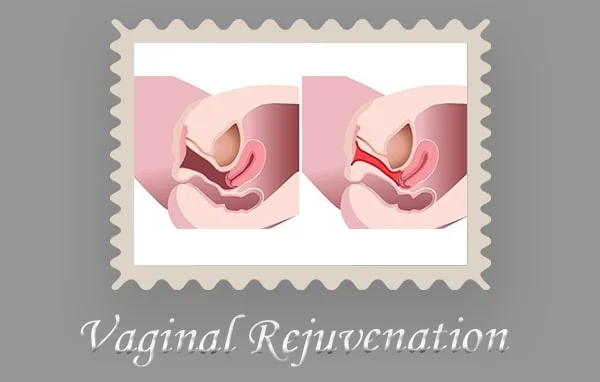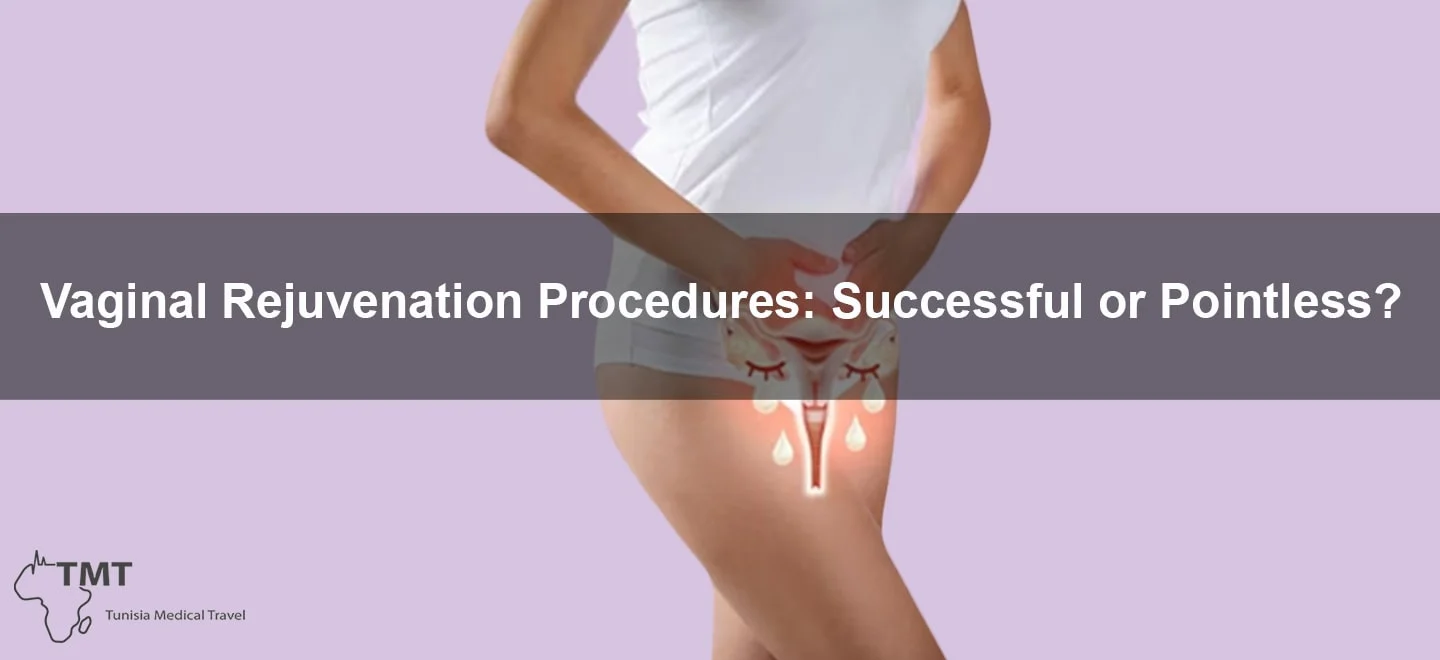Vaginal Rejuvenation Procedures: Successful or Pointless?
Vaginal Rejuvenation Procedures: Successful or Pointless?
What’s Meant by Vaginal Rejuvenation?
Non surgical Types
Laser therapy
The use of a CO2 laser to deliver a controlled injury to the vaginal wall to induce an increase in collagen production had recently shown promising results in a small uncontrolled trial and then in a randomized controlled, the results of the first pilot study indicate a vast subjective improvement in physiological symptoms of vaginal atrophy in 94% of the women with no reported side effects. An improvement in urogenital symptoms and an increase in the maturation value index of the vaginal mucosa was also observed. The randomized controlled trial of 197 postmenopausal and postnatal women demonstrated an improvement in symptoms and an increase in the vaginal maturation value on biopsy samples but did not demonstrate a clinical or subjective difference between the patients receiving laser treatment and the control group receiving local hormone therapy. These two studies suggest that laser therapy could be a successful treatment option, but more research is required to prove and understand its long-term effects and limitations in comparison to other treatments.
Hormone supplementation
This form of treatment using systemic estrogen therapy in the form of gel, patch, or estrogen-only pill has been proven to have many side effects and the risk and incidence of breast, ovarian, or uterine cancer cannot be ignored. It is usually not very successful in improving vaginal atrophy as the global effect of increasing circulating hormone levels has minimal overall effect on the vagina. Local estrogenized hormone replacement therapy is somewhat more successful, but there is a high incidence of patients discontinuing treatment due to minor side effects including discharges or bleeding. A recent trial of the use of estrogen preparations (creams, pessaries, or vaginal rings) demonstrated some improvement in symptoms of atrophy and an increase in vaginal wall thickness, but this is not the solution for all patients and many patients would rather avoid using hormones and their effects completely.
Surgical Types
Perineoplasty
Vaginal childbirth often causes destruction of the perineum, the area between the vagina and anus, which can lead to scarring and widening of the vaginal entrance. The aim of this procedure is to remove the scar tissue and aesthetically repair the perineum, to provide better support for the lower part of the vagina. This procedure should not be carried out before the woman has finished having children. Gibb et al. concludes that this is a relatively simple surgery to perform, with good patient satisfaction.
Vaginoplasty
The objective of this surgical procedure is to tighten and give a more aesthetic appearance to the vagina. The procedure involves removing excess vaginal lining and tightening the surrounding soft tissues and muscles. The average cost of this surgery is $4000, with a 6-week recovery period. The results are variable and the surgery can have unwanted side effects, such as hematoma or infection. Women who have a large BMI have an increased risk of complications. Gibb et al. also reported that the long-term risks are unknown. However, some women demand a tight vagina and believe that the increase in confidence and sexual gratification are worth the risk.
Effectiveness of Vaginal Rejuvenation
A range of surgeons and gynecologists have developed techniques, some developed further from the traditional vaginal surgery. These include laser surgery, as well as a host of other energy-based techniques which claim to increase performance and minimize recovery time. Collagen-based products have also been used in perivaginal tissues to increase firmness, but this technique is relatively new and has conflicting evidence supporting its use. Unfortunately, many of the new techniques have been developed without proper trials and/or long-term follow-up. Manufacturers have encouraged their use in under-regulated and commercial environments, and many practitioners are using them without the appropriate concern for safety and efficacy. A study in 2004 reviewed many vaginal rejuvenation procedures and concluded that there was little reliable evidence of effectiveness for any of the methods.
The continual development of new procedures compounded by the rising demand for female genital cosmetic surgery has raised concerns from many practitioners in this field. They are unaware of how to respond to patient requests and have fears of litigation in cases where the procedure has little evidence of benefiting the patient. These concerns were expressed in 2007 when the Royal Australian and New Zealand College of Obstetricians and Gynaecologists issued an opinion that female genital cosmetic surgery should only be performed by properly trained medical practitioners and should be subject to the same regulations and ethical considerations as any other medical intervention.

When Is Vaginal Rejuvenation Medically Necessary?
Vaginal birth and dramatic weight loss or weight loss after bariatric surgery may overstretch the vagina. Leaks of stool or gas from the vagina may occur if the rectum bulges into the vagina. This is called rectocele. Urine may leak from the bladder if the support for it weakens. This is called stress urinary incontinence. Incisions or biopsies done in and around the vagina to treat problems such as pelvic organ prolapse or certain cancers may cause scar tissue to form. Pain after hysterectomy. Changes in hormone levels after menopause may affect the vaginal tissue and its support of the bladder and urethra. These changes can lead to pelvic organ prolapse or loss of urine with coughing, laughing or sneezing. These factors can affect a woman’s quality of life and self-esteem. Patient’s medical and sexual history, as well as what bothers the patient will determine whether or not vaginal surgery is indicated and what possible risks or benefits may occur.
Pelvic Floor Reconstruction vs. Vaginal Rejuvenation
Pelvic floor reconstruction is a surgical procedure employed to fix physical changes that occur during childbirth or aging. These changes manifest as a stretching and tearing of the pelvic floor muscles and tissues. The most common symptom of this is urinary stress and incontinence. Pelvic floor reconstruction can be remedied by performing a partial colposuspension, suturing the bladder neck to nearby tissue in an effort to provide support, or by performing a Marshall-Marchetti-Krantz urethropexy, in which the bladder neck is supported by attaching it to the back of the pubic bone. These procedures can sometimes have negative side effects though, such as urinary retention. Vaginal rejuvenation procedures on the other hand, can seek to solve urinary stress and incontinence by conducting a mid-urethral sling procedure. This involves inserting a piece of synthetic mesh tape to support the urethra. This piece of mesh tape can sometimes erode through the vagina and lead to infection and pain. However, it appears that this procedure is more effective in solving urinary stress and incontinence as a recent study has found. This study demonstrated that pelvic floor reconstruction surgeries for urinary stress and incontinence were less effective than the vaginal reju Financials: Estimated Cost of Vaginal Rejuvenation.
Cosmetic surgeries are not cheap, therefore they require a firm financial background. Depending on the type of procedure you undergo – non-invasive, injections, or surgical – there are many different prices. Non-invasive procedures are generally cheaper than the latter, potentially being at least $450 compared to surgical procedures costing an average of $2000-$4000. If more than one procedure is required, for example, a labiaplasty and vaginoplasty, there are additional costs involved. Some procedures will require a general anesthetic to be administered; an anesthetist will have to be paid for their time, services, and resources. Given the invasive nature of some surgeries, there is a higher risk of complications. Complications can cost up to over $27,000, which is quite a significant amount compared to the cost of the original surgery. Coming from a Vaginismus patient, strategies to manage this problem usually are costly. venation procedure.
Side Effects to Know
The most common side effects for vaginoplasty are the build-up of excess scar tissue, creating a less elastic vaginal canal, and the removal of too much skin resulting in discomfort. Frequently, a second surgery must be performed to remove the excess scar tissue. Failed tightening or narrowing of the vaginal canal is an unsatisfactory result for the patient. A less elastic vaginal canal can promote urinary stress incontinence. This occurs when the support from the pelvic floor and the muscles around the urethra are weakened, causing the urethra to open during certain activities, such as laughing or sneezing, which causes urine to leak. This condition is more common in older women, but it can be a great annoyance to women of any age. Incontinence can also occur in women who have children via vaginal delivery. The removal of too much skin from the procedure can cause severe discomfort and a feeling of pulling on the skin. The patient may also experience dyspareunia, which is pain during sexual intercourse. Both of these conditions are due to insufficient lubrication of the vaginal canal. Too much skin removal can also lead to prohibited intercourse. Another common side effect is infection in the vaginal area, and women with estrogen deficits experience vaginal dryness and irritation.
Patients with chronic disease or other illnesses may not be good candidates for vaginal rejuvenation. Complications are compounded if the surgeon does not formally examine the patient preoperatively, or if the patient is not forthright in revealing her medical history. » Disease and illness complications are an important predisposing factor to the potential for postoperative complications or adverse effects from a procedure. Poor health or the presence of certain diseases increase the risk for adverse side effects. An absence of a comprehensive preoperative patient examination and history can lead to complications during and/or after a procedure. Surgeons also stated that an additional factor in complications is the failure of the patient to completely divulge their medical history. A clear understanding of a patient’s health is extremely important in determining the risk for certain procedures. High-risk patients should not undergo certain procedures due to their potential risk for complications.

